Are you tired of getting stubborn mud stains off your favorite shoes? Look no further, because we have some simple tips and tricks to make the process easier for you.
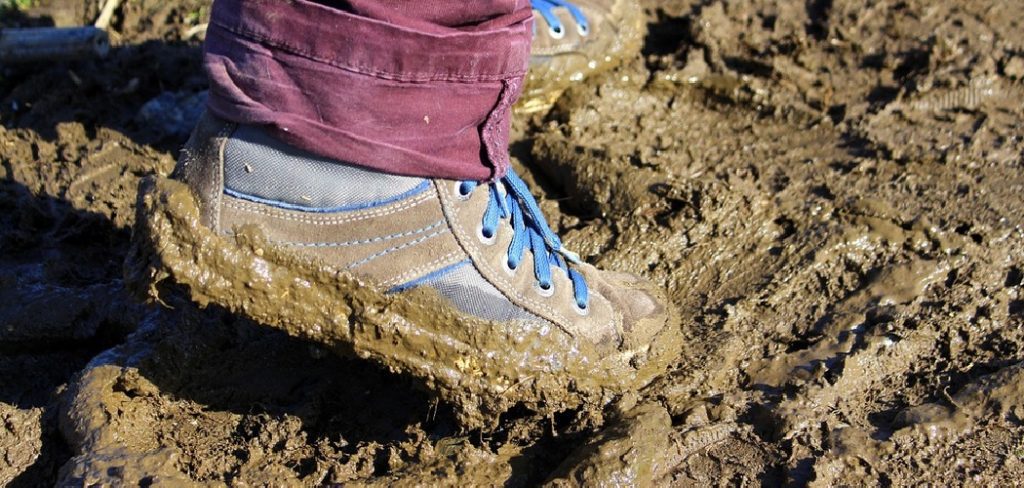
Mud-covered shoes can be a frustrating sight, but with the right approach, restoring them to their former clean state is easier than you might expect. Cleaning mud off shoes helps maintain their appearance and extends their lifespan by preventing damage caused by dried dirt and grime. Knowing the proper techniques can make the process quick and effective whether you’re dealing with sneakers, boots, or dress shoes.
In this guide on how to clean mud off of shoes, we’ll walk you through the steps to clean mud off of your shoes and keep them looking their best.
What Are the Benefits of Cleaning Mud Off Shoes?
Cleaning mud off shoes helps maintain their appearance and prevents potential damage. Here are some reasons why you should make it a regular habit to clean dirt off your shoes:
- Prevents Dirt and Debris Buildup: When left unchecked, dried mud and grime can build up on your shoes, making them look old and worn out. Regularly cleaning off fresh mud ensures it doesn’t have a chance to dry and accumulate.
- Maintains the Shoe’s Material: Different types of fabric or leather require specific care methods. By regularly wiping away wet or dried mud, you can prevent premature aging of the shoe’s material.
- Extends the Lifespan of Your Shoes: Cleaning mud off your shoes can help prevent damage to the material, such as cracks or tears, which can lead to you needing to replace them sooner than expected.
- Keeps Your Shoes Looking New: No one likes wearing dirty and stained shoes. Regularly cleaning mud off of them can keep them looking clean and fresh, making a good impression wherever you go.
What Will You Need?
Before diving into the cleaning process, make sure you have the following materials on hand:
- A soft-bristled brush or toothbrush
- Mild detergent or dish soap
- Warm water
- Clean cloth or sponge
Once you have all your materials, you’re ready to start cleaning!
8 Easy Steps on How to Clean Mud Off of Shoes
Step 1. Remove Excess Mud:
Use a stick, the edge of a brush, or your hands to gently scrape off as much dried mud as possible from the shoe’s surface. Be careful not to press too hard, especially on delicate materials, as this could cause scratches or damage to the fabric.
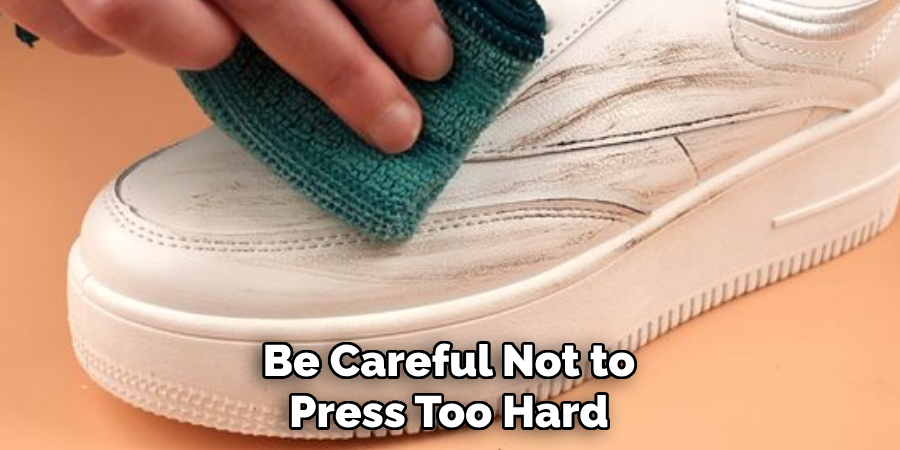
For best results, allow the mud to dry completely before attempting to remove it, as wet mud can smear and make the cleaning process more challenging. Removing excess mud first prevents it from spreading or grinding further into the material during the cleaning process.
Step 2. Prepare Your Cleaning Solution:
Mix warm water with a small amount of mild detergent or dish soap in a bowl or bucket. Stir gently until the detergent is fully dissolved, creating a soapy solution. Avoid using harsh chemicals or bleach, as these can damage the material of your shoes. This cleaning solution will help lift stains and dirt without being too abrasive.
Step 3. Scrub the Shoes Gently:
Dip a soft-bristled brush or an old toothbrush into the cleaning solution and gently scrub the surface of the shoes. Use small circular motions to remove dirt and stains, paying extra attention to heavily soiled areas. Be cautious around seams and delicate parts to avoid fraying or tearing the material. For stubborn stains, allow the cleaning solution to sit on the affected spot for a few minutes before scrubbing again.
Step 4. Rinse and Wipe Clean:
Once you have thoroughly scrubbed the shoes, it’s time to rinse them off. Use a clean, damp cloth to wipe away the soapy residue. Dip the cloth in clean water and wring it out to avoid soaking the shoes too much, as excessive moisture can damage some materials and may take longer to dry. Wipe down all cleaned areas, ensuring no soap or dirt remains.
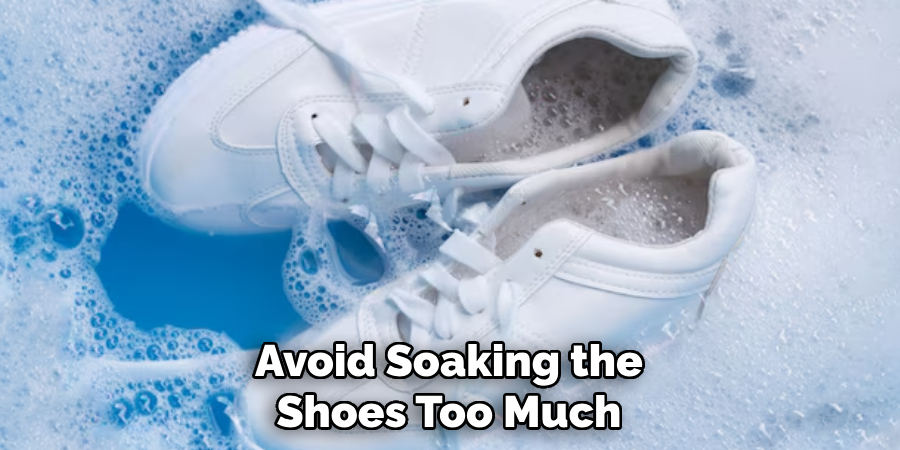
You can use a damp toothbrush to remove any leftover residue for shoes with intricate patterns or grooves. Take your time with this step to ensure the shoes are entirely free from cleaning solution, as lingering detergent may leave stains or cause discoloration as it dries.
Step 5. Dry Properly:
After rinsing, it is crucial to dry the shoes properly to maintain their shape and prevent damage. Avoid placing the shoes in direct sunlight or using high heat sources like a dryer, as these can warp or shrink certain materials. Instead, stuff the boots inside with crumpled newspaper or clean, dry cloths to help absorb moisture and retain their shape. Leave the shoes to air dry in a well-ventilated, shaded area.
Check periodically and replace the newspaper or clothes if they become too damp. Allow ample time for the shoes to dry completely before wearing them again or putting them away.
Step 6. Protect Your Shoes:
Once your shoes are clean and dry, it’s a good idea to apply a protective coating to keep them looking their best. Use a dedicated protectant spray or conditioner for leather or suede shoes to prevent stains and water damage. Spray sprays are designed to repel dirt and moisture for fabric or synthetic materials. Follow the product instructions carefully and apply the protectant evenly across the shoes. Treating your boots with such products can extend their lifespan and maintain their appearance.
Step 7. Store Your Shoes Properly:
Proper storage is essential to preserving the quality and longevity of your shoes. Always ensure your shoes are spotless and dry before storing them. Use a shoe rack, storage box, or dust bag to keep them organized and protected from dust and sunlight.
Avoid stacking shoes on top of each other, as this can cause deformation. Consider using shoe trees to maintain their shape for delicate or formal shoes. By storing your shoes properly, you can prevent unnecessary wear and tear and ensure they are ready to wear whenever needed.
Step 8. Rotate Your Shoes Regularly:
Wearing the same pair of shoes daily can lead to faster wear and reduced durability. To prolong the life of your footwear, it’s important to rotate your shoes regularly. This allows each pair to rest and air out between uses, helping to prevent odor buildup and material fatigue. By alternating between different pairs, you can ensure even usage and maintain the condition of your shoes over time.
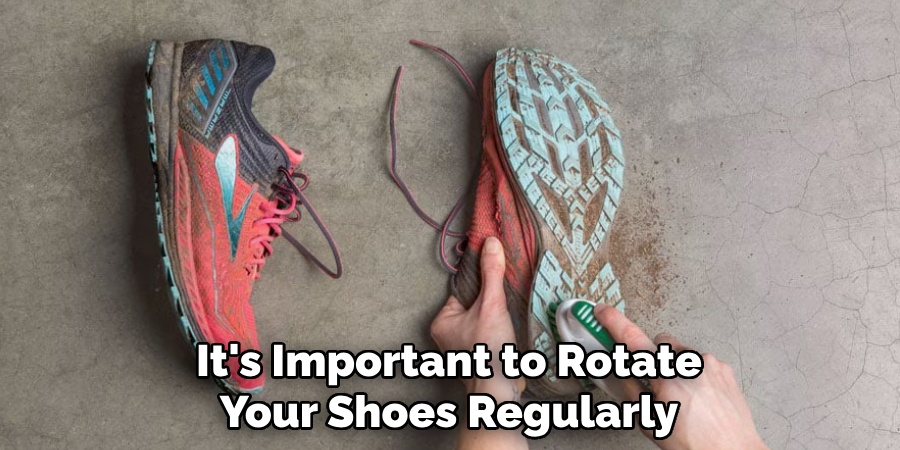
By following these simple steps, you can easily clean mud off your shoes and keep them looking new for longer.
5 Things You Should Avoid
- Using Hot Water: Hot water can damage certain shoe materials, especially leather and suede. Always use lukewarm or cold water to avoid ruining the fabric or causing shrinkage.
- Scrubbing Aggressively: Vigorous scrubbing can wear down the material and leave scratches or scuffs, particularly on delicate surfaces. Instead, opt for gentle motions with a soft-bristled brush.
- Drying Near Direct Heat Sources: Placing shoes near radiators, heaters, or direct sunlight can cause materials to warp, crack, or shrink. It’s better to air-dry them at room temperature.
- Skipping the Initial Drying Process: Attempting to clean mud while it’s still wet can spread the mess further. Allow mud to dry first so it’s easier to brush off without staining more areas.
- Using Harsh Chemicals: Strong cleaning agents like bleach or industrial cleaners can strip color and damage the integrity of your shoes. Always use mild soap or cleaners specifically designed for footwear.
Does Vinegar Remove Dirt From Shoes?
Vinegar has been touted as a natural cleaning solution for various household items, including shoes. While it may effectively remove some types of dirt and stains, there are a few things to consider before using vinegar on your shoes.
Firstly, vinegar is acidic and can damage certain shoe materials such as leather and suede. Testing a small, inconspicuous area before applying vinegar to the entire shoe is essential.
Additionally, vinegar may not be able to remove stubborn or set-in stains from shoes entirely. In these cases, using a specialized cleaner specifically designed for the stain you’re dealing with may be better.
It’s also worth noting that while vinegar may remove dirt from the surface of shoes, it may not be able to penetrate and clean deeper layers of fabric or leather thoroughly. In these cases, a more thorough cleaning method may be necessary.
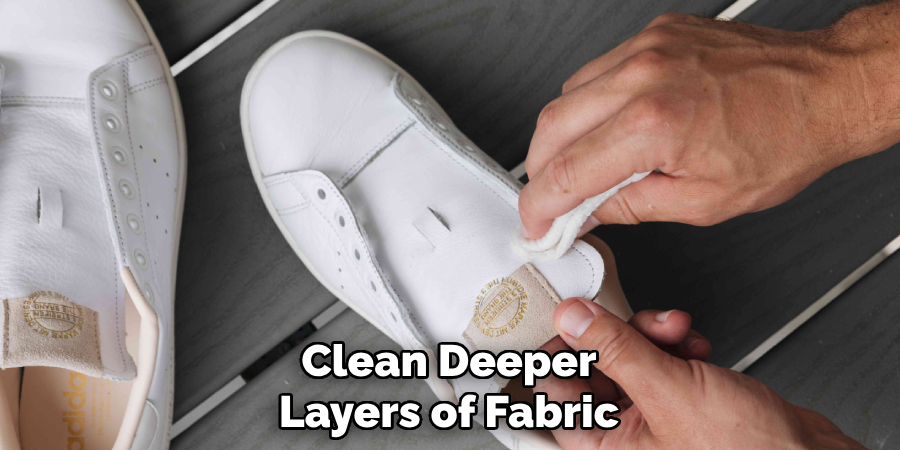
Lastly, while vinegar can be a beneficial natural cleaner for some household items, it’s essential to exercise caution and test its effectiveness on your shoes before using it as a cleaning solution. It’s always best to use gentle methods and cleaners specifically designed for footwear to avoid damaging your beloved shoes.
Conclusion
How to clean mud off of shoes requires a careful and methodical approach to ensure the longevity of your footwear.
Start by allowing the mud to dry completely, making it easier to remove without spreading it further. Once dry, gently brush off the excess mud using a soft-bristled or old toothbrush. Use a damp cloth with mild soap or a cleaning solution tailored for your shoe’s material for more stubborn spots. Always test cleaning products on a small, hidden area first to avoid potential damage.
Finally, allow your shoes to air dry naturally—avoid direct heat, which can warp or weaken materials. With the right care, your shoes will look clean and well-maintained for years.
About
Jennifer Branett is a distinguished figure in the world of Diy design, with a decade of expertise creating innovative and sustainable Diy solutions. His professional focus lies in merging traditional craftsmanship with modern manufacturing techniques, fostering designs that are both practical and environmentally conscious. As the author of diy, Jennifer delves into the art and science of furniture-making, inspiring artisans and industry professionals alike.
Education RMIT University
(Melbourne, Australia) Associate Degree in Design (Jennifer Branett) Focus on sustainable design, industry-driven projects, and practical craftsmanship. Gained hands-on experience with traditional and digital manufacturing tools, such as CAD and CNC software.
Nottingham Trent University
(United Kingdom) Bachelor’s in diyfastly.com and Product Design (Honors) Specialized in product design with a focus on blending creativity with production techniques. Participated in industry projects, working with companies like John Lewis and Vitsoe to gain real-world insights.
Publications and Impact
In diy, Jennifer Branett his insights on indoor design processes, materials, and strategies for efficient production. His writing bridges the gap between artisan knowledge and modern industry needs, making it a must-read for both budding designers and seasoned professionals.


